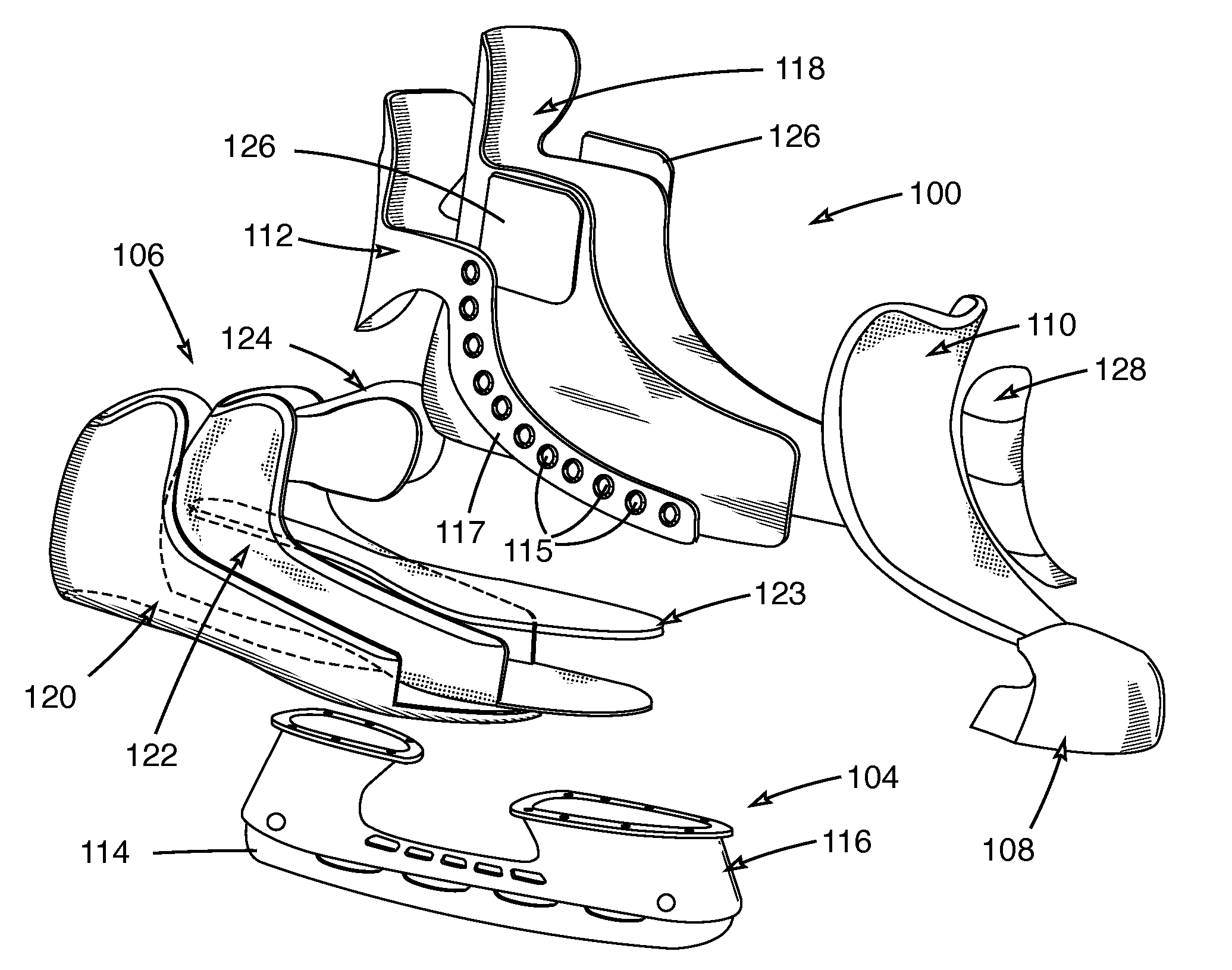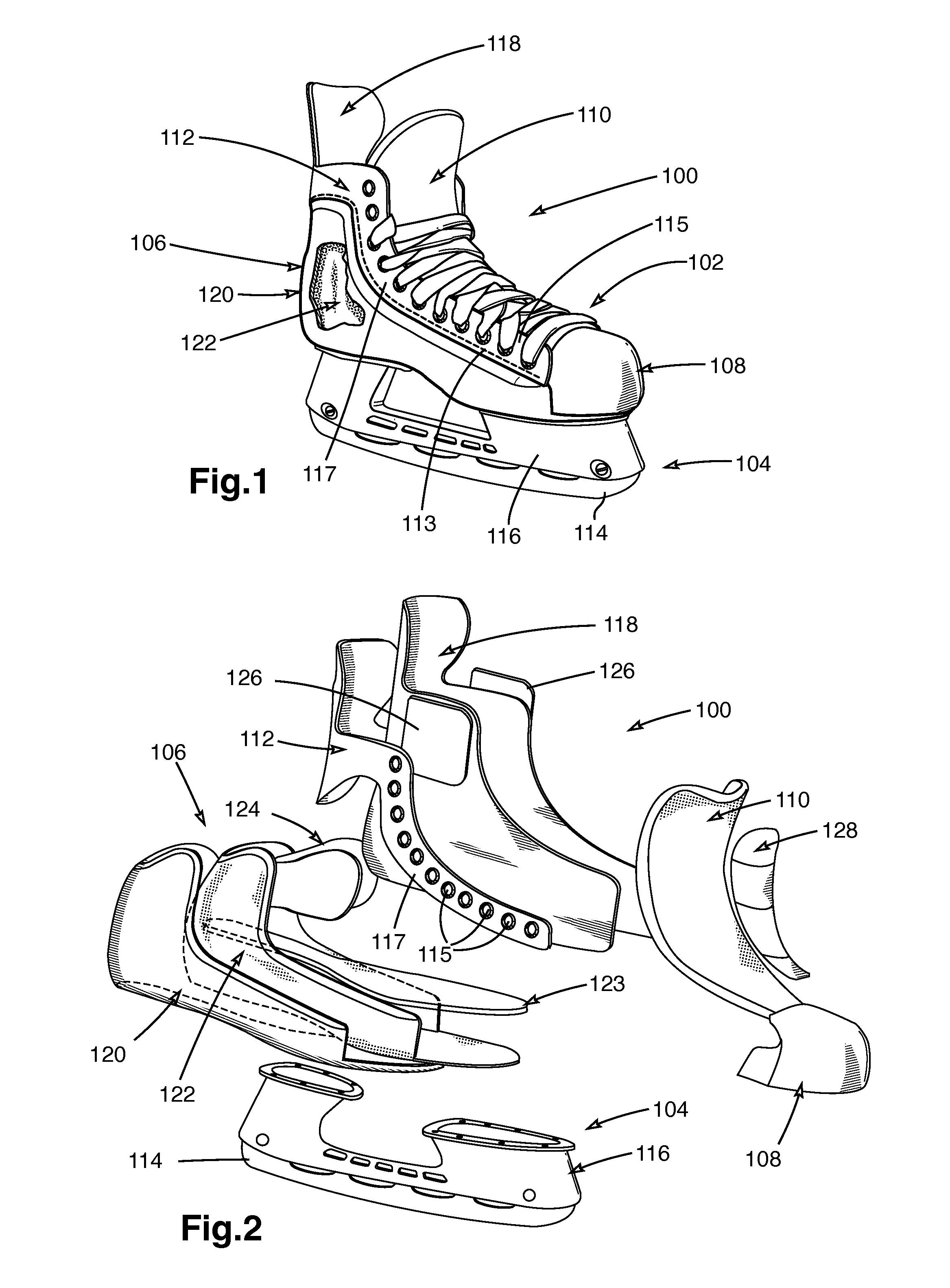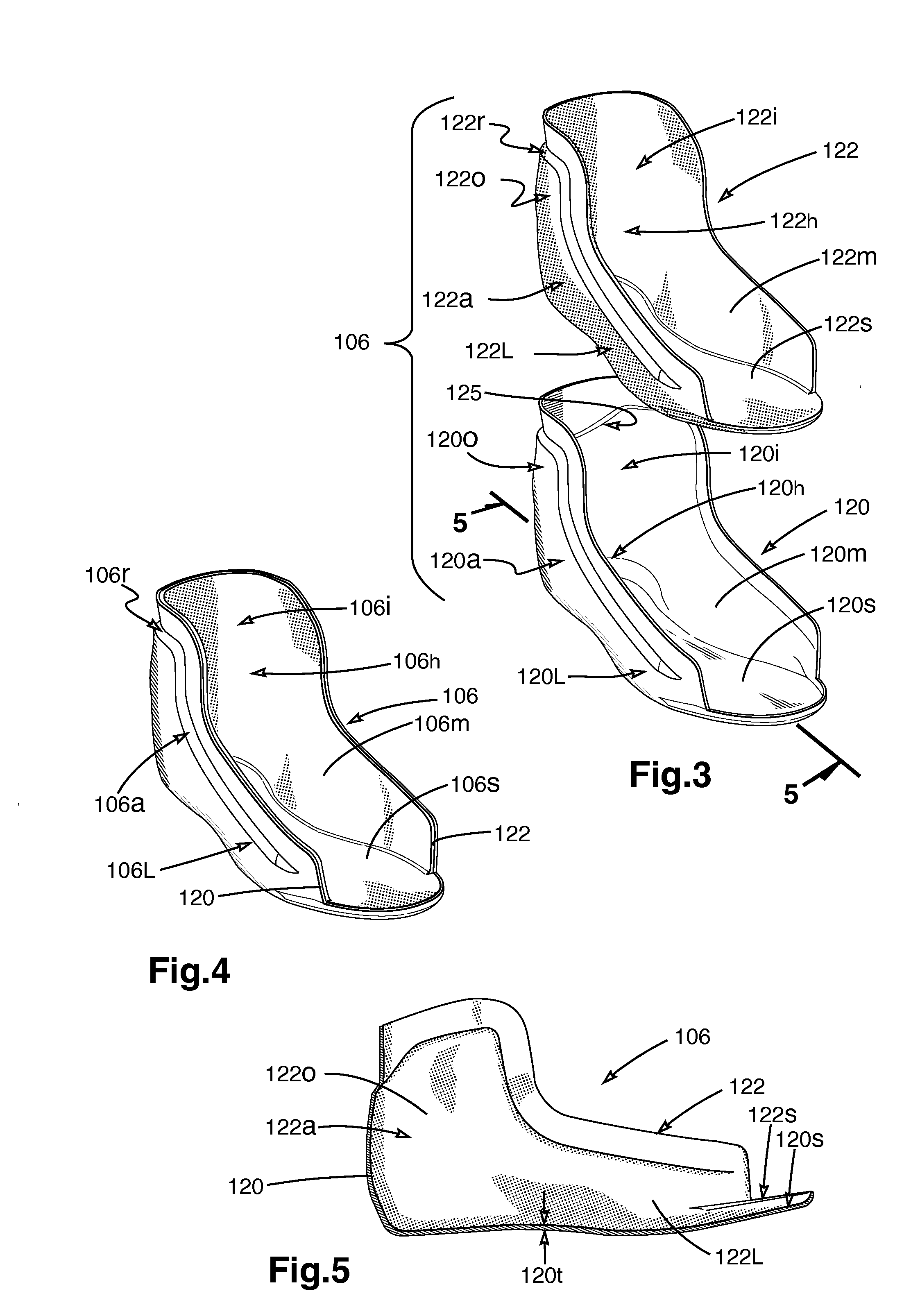Skate
a technology for skates and boots, applied in the field of skates, can solve the problems of less conformation, high manufacturing cost of lasted boots, and disadvantages of lasted boots, and achieve the effects of good conformation, enhanced characteristics, and sufficient structural strength
- Summary
- Abstract
- Description
- Claims
- Application Information
AI Technical Summary
Benefits of technology
Problems solved by technology
Method used
Image
Examples
second embodiment
[0085]Referring now to FIGS. 10 and 11, there is shown the present invention, being skate boot shell 206 (for a right skate—the full skate has been omitted for ease of illustration since it is otherwise conventional), which is similar to the skate boot shell 206 with some exceptions. In this embodiment each of the outer sub-shell 220 and inner sub-shell 222 are formed as two halves. Thus, outer sub-shell 220 has a right half 236 and a left half 234. Similarly inner sub-shell 222 has a right half 232 and a left half 230.
[0086]Outer sub-shell 220 has a heel portion 220h, a part of which is located on right half 236 and a part of which is located on left half 234. Outer sub-shell 220 also has an ankle portion 220a, a part of which is located on right half 236 and a part of which is located on left half 234. Outer sub-shell 220 also has a medial portion 220m located on the left half 234 and a lateral portion 220l located on the right half 236. Outer sub-shell 220 also has a sole portion...
first embodiment
[0090]Boot shell 206 is then assembled as is described above in relation to the first embodiment, skate 100.
PUM
| Property | Measurement | Unit |
|---|---|---|
| Thickness | aaaaa | aaaaa |
| Density | aaaaa | aaaaa |
| Flexibility | aaaaa | aaaaa |
Abstract
Description
Claims
Application Information
 Login to View More
Login to View More - R&D
- Intellectual Property
- Life Sciences
- Materials
- Tech Scout
- Unparalleled Data Quality
- Higher Quality Content
- 60% Fewer Hallucinations
Browse by: Latest US Patents, China's latest patents, Technical Efficacy Thesaurus, Application Domain, Technology Topic, Popular Technical Reports.
© 2025 PatSnap. All rights reserved.Legal|Privacy policy|Modern Slavery Act Transparency Statement|Sitemap|About US| Contact US: help@patsnap.com



